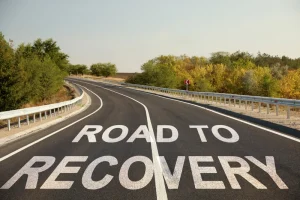
Subsequent priorities for supporting the individual should include linkages to resources and other supports identified in the return to use section. OASAS currently maintains guidance on toxicology practices in certified treatment https://ecosoberhouse.com/ programs. As recovery residences do not provide treatment, this guidance provides suggestions to inform practices.
Level 2 houses generally elect a supervisor, but don’t offer recovery services

Furthermore, some states incentivize or mandate licensing or certification of recovery homes, which likely influences variation in both recovery housing quantity and quality across states. Some owners and operators also may be more skeptical of governmental or agency oversight and choose not to participate in certification and licensing. Additionally, if the prevalence of recovery housing has been differentially under-estimated in places with high alcohol- and/or drug-involved mortality rates, the relationship between recovery housing availability and mortality may be under-estimated as well. Further, these analyses represent one point in time, and some residences may have closed by the time we found them, due to lags in updating of online resources.
2.2. Resident focus group
Recovery residences offer individuals a secure living space and immediate access to a community that supports recovery. While a most advocate for or mandate participation in 12-step mutual-help groups such as Alcoholics Anonymous or Narcotics Anonymous, the level of structure and incorporated programmatic features varies among recovery homes. Recovery housing availability was measured by an indicator of any recovery housing (versus none) in a given county, a count of recovery residences in each county, and a count of residences per 100,000 population. As described below, the dichotomous indicator and basic count were used as outcomes in the regression models, and the residence density count was used for the hot spot analyses. Operator responsibilities and ethics should be included in the policies, procedures, and staff handbook, if applicable.
CARR Guidebook and Best Practices
These settings offer a homelike environment for residents and promote diversity, equity, and inclusion for all applicants. The final principle of empowerment comprises the importance of skill building and marijuana addiction for residents to feel affirmed in their choices for their recovery. Assisting residents in increasing their mastery of recovery-oriented behaviors can promote their long-term recovery journey.

Timely Submission of Accurate Data
To address shortcomings experienced by clients attending substance use treatment, services that can augment the care that traditional substance use treatment programs provide may be necessary. Indeed, these sorts of services, aptly named recovery support services, are steadily growing in popularity and acceptance (Laudet & Humphreys, 2013). Recovery Residences provide a unique shared living environment for individuals who have a common goal of maintaining and sustaining recovery. It is essential that operators develop clear and thorough policy and procedures for the process of accepting new members into the residence. Admission criteria should be developed with the understanding that recovery has many pathways, meaning applicants are permitted to apply based on their own recovery journey. A Recovery Residence is not a clinical placement recovery residence but is rather a voluntary choice that provides a physically and emotionally safe, secure, and respectful environment for individuals in recovery from substance use disorder.
Emergency medical kits should contain supplies that can be used safely by staff and residents. During the onboarding or admission process into the residence, staff and residents should be informed of the location of the kits and their contents. Kits should be checked at regular intervals by the residence manager to ensure that the kit is stocked appropriately with required supplies, including naloxone in sufficient quantities. The kits should be clearly labeled, easy to transport, and kept in designated locations that are accessible at all times. Topics should span best and promising practices in the recovery field, including implementation of the social model, as well as essential emergency training, including but not limited to crisis intervention, de-escalation, fire safety, First Aid/CPR, naloxone administration, and MAT and its benefits.
Recovery Residences (Part
Each residence is responsible for providing a safe healing environment for its residents. Policies and procedures should be written to ensure that the environment is physically safe from hazards and provide for the emotional safety of residents by utilizing a person-centered, strength-based, trauma-informed approach to recovery. Residents and staff should be made aware of the impact that items which may create an unsafe environment have on each resident in the house.
- Staff are supervised, trained, or credentialed and are often graduates of a recovery residence.
- Oxford Houses are governed by a charter and rules that are agreed upon at the outset, but those are kept to a minimum and decisions are made democratically.
- Developing a timely recovery plan that is frequently reviewed can enhance motivation and promotes positive actions in building recovery capital.
- The goal of Recovery Residences is to nurture a person’s self-directed recovery goals in a supportive and safe environment.

A recovery residence, also known as a sober living home or halfway house, is a supportive living environment designed to provide individuals in recovery from substance abuse with a safe and structured place to reside. Unlike inpatient treatment settings, recovery residences offer a less restrictive environment while still providing essential support and resources for maintaining sobriety. Recovery housing and other peer-based recovery support services can augment existing treatment services to address these challenges (Ashford et al., 2019) and build recovery-oriented systems of care (ROSC; Sheedy and Whitter, 2009) within communities. Future NSTARR work will examine data on local alcohol and drug treatment availability, on- and off-premise retail alcohol outlets, and crime in relation to recovery housing. This paper presents an overview of the development of the NSTARR database and provides the first set of findings on the national geographic distribution of recovery residences. We present national and state-level hot spot analyses to identify places with more (or less) recovery housing than expected based on the underlying population distributions.
Ample space for community activities, such as a dining area that can host the entire house for meals or a living room to hold house meetings and social events, can significantly enhance communal bonds. Recovery housing generally refers to alcohol- and drug-free living environments that provide peer support for those wanting to initiate and sustain recovery from alcohol and other drug (AOD) disorders. For individuals overcoming addiction, the journey to long-term sobriety requires more than just detox and initial treatment programs. Recovery residences offer a vital bridge between inpatient treatment and independent living.
Steps to Well-being: Navigating Recovery with Hope and Support
All staff, peers, and volunteers should receive these documents during onboarding, and be trained and supervised in these areas. By ensuring the fulfillment of these responsibilities and ethical considerations, operators and residents can work together to create a supportive and effective environment conducive to recovery. They should refrain from engaging in sexual misconduct, sexual harassment, or romantic relationships with residents. They are prohibited from exploiting residents and engaging in transactional arrangements, including the offering of goods, services, or items of monetary value in exchange for work, favors, or services.
